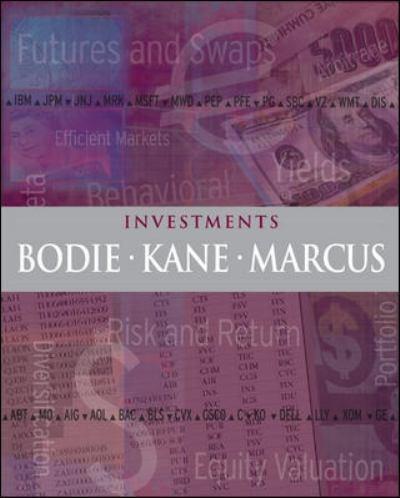Answered step by step
Verified Expert Solution
Question
1 Approved Answer
a recheck on parts a),b), c) and a detailed and step by step process for part d) would be greatly appreciated!! 10. Miller company will
a recheck on parts a),b), c) and a detailed and step by step process for part d) would be greatly appreciated!! 

10. Miller company will have retained earnings of $2,000,000 this year. The marginal tax rate is 40 percent. The company can raise debt at a 11.5 percent interest rate for any amount of debt less than $1,500,000. If the firm raises more than $1,500,000, a 12.5 percent interest rate will apply. The risk-free rate is 5%, the return on the stock market is 12% and the firm has a beta of 1.6. The next dividend to be paid by Miller will be $2.00, its stock price is $20.00, and its growth rate expected in earnings and dividends is 6 percent. If Miller issues new common stock the floatation cost will be 10 percent. Miller plans to finance all capital expenditures with 70 percent debt and 30 percent equity. a) What are the break points due to (1) retained earnings and to (2) cheap debt being used up? (2 points) retained earnings = $2,000,000.00 equity portion = 30% break point = retained earnings/ equity = $6,666,666.67 1 b) What is the estimated cost of retained earnings? (Use only the average of the Discounted Dividend and CAPM approaches) (4 points) CAPM= risk free rate +(market return risk free rate)"Beta = 16.20% Cost of equity(DD) = (next dividend/stock price)+growth rate = 16,00% Estimated cost of retained earnings = (CAPM + cost of equity(DD))/2 = 16.10% c). What is the cost of new common equity, net of floatation costs, raised by selling stock? (3 points) c). What is the cost of new common equity, net of floatation costs, raised by selling stock? (3 points) stock price net of floatation cost = stock price X (1-floatation cost) =$18.00 cost of new common equity = (next dividend/stock price of net floatation cost) + growth rate = 17.11% I d) There are two break points in Miller's MCC schedule; one when retained earnings have been used up and one when low-cost debt has been used up. Therefore, there are three intervals in the MCC schedule. What is the marginal cost of capital in each of these intervals? (6 points) 

Step by Step Solution
There are 3 Steps involved in it
Step: 1

Get Instant Access to Expert-Tailored Solutions
See step-by-step solutions with expert insights and AI powered tools for academic success
Step: 2

Step: 3

Ace Your Homework with AI
Get the answers you need in no time with our AI-driven, step-by-step assistance
Get Started


